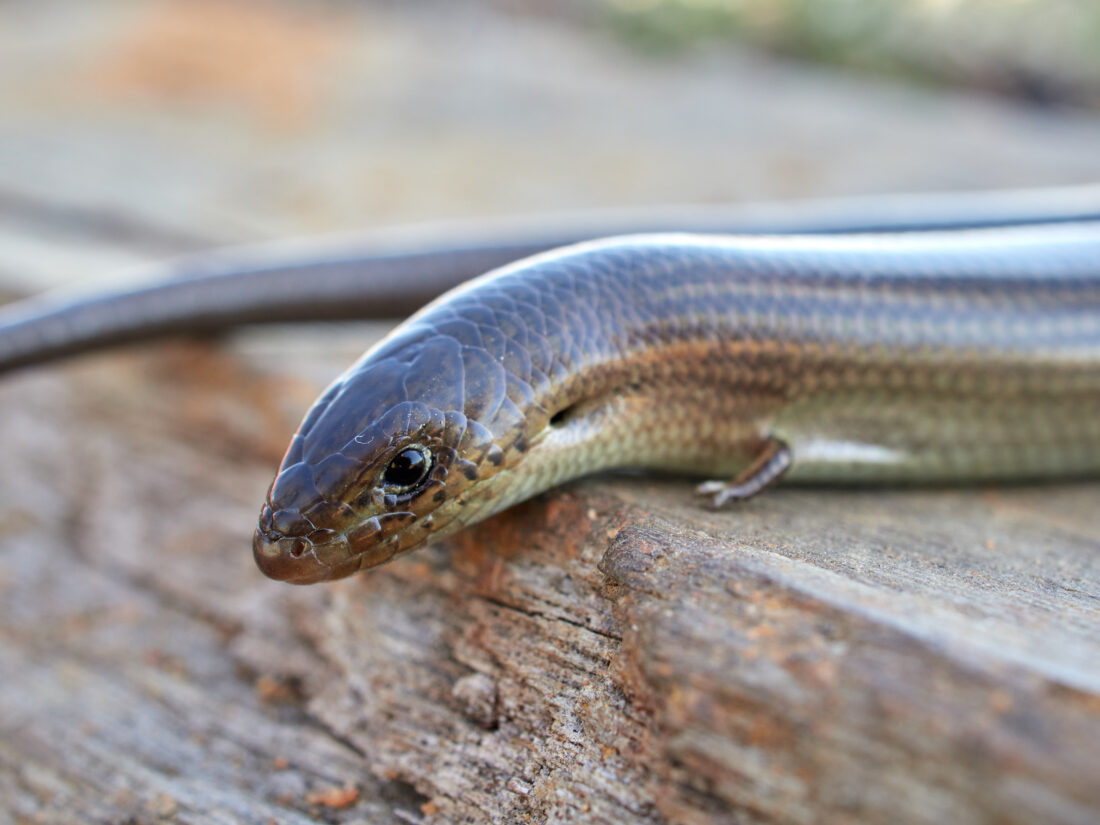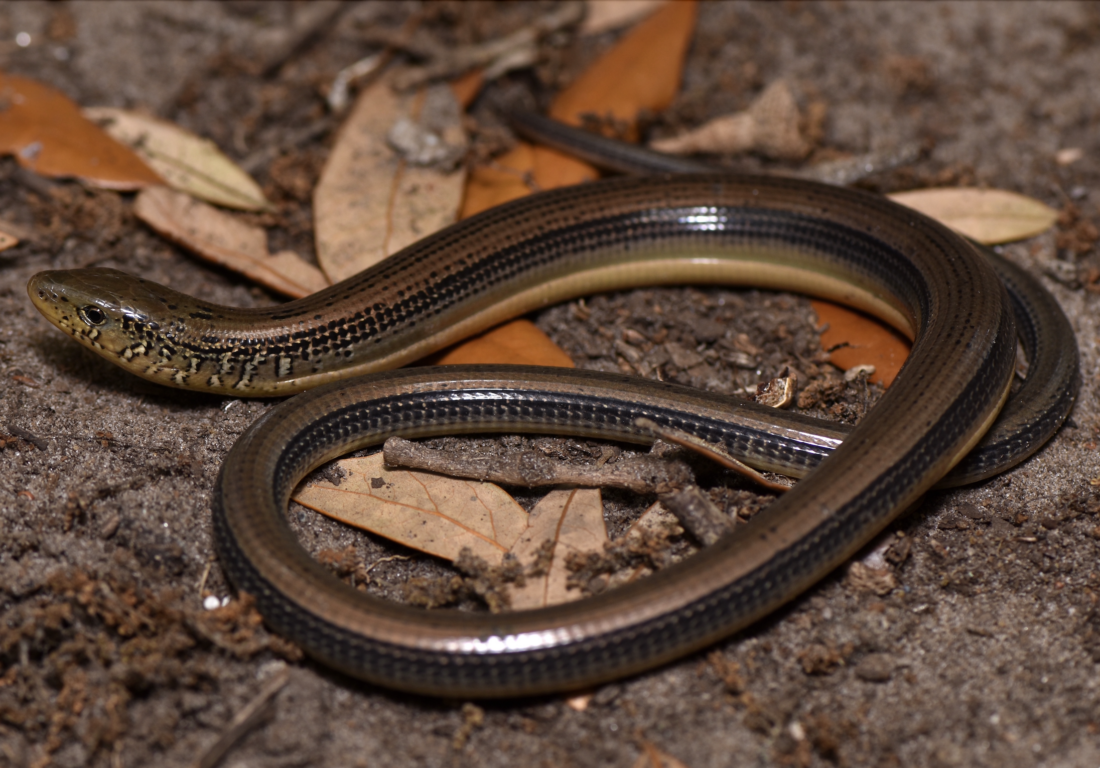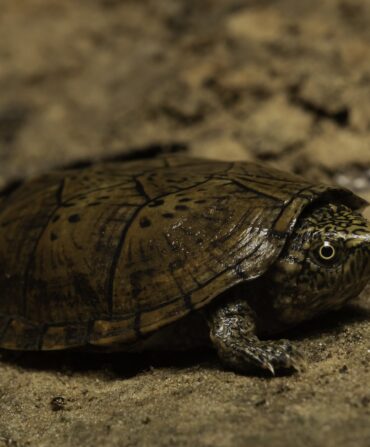Here’s a piece of evolutionary wisdom: Use it or lose it. Over the four billionish years that have seen the diversification of life, that adage has applied itself to eyes and organs and tails and, yes, limbs. All over the world, limbless lizards masquerade as snakes, and we have our own set of species here in the South: glass lizards.
“Legless lizards are such a great reminder of the mysteries that nature holds,” says North Carolina herpetologist and geneticist JJ Apodaca, the executive director of the Amphibian and Reptile Conservancy. “Here is something that isn’t a snake but evolved the same body plan.”
The Southeast is actually home to four species of legless glass lizards: slender, Eastern, mimic, and island. Their ranges touch Florida, Georgia, Alabama, the Carolinas, Louisiana, Virginia, and Oklahoma. They occupy a variety of habitats, including wet meadows, deserts, grasslands, and pine flatwoods, and hunt insects, spiders, bird eggs, other reptiles, and amphibians. They spend much of their time underground, nosing and sliding through sand or soil or leaf litter, but they do poke around above ground, too—sometimes in people’s yards.
At first glance, for a primate like a human, those special neural circuits our ancestors used to detect snakes might start pinging—a useful get-the-hell-away response sharpened by our own evolution. But closer inspection reveals some giveaways that this is no snake: A legless lizard has two clear holes for ears, a nicety snakes don’t enjoy, and the lizard might blink, which snakes can’t do, and there’s a distinctive groove running along the lower side of the body, which snakes don’t have.

Plus, glass lizards take their name from the fact that they can break. Like other lizards, their tails, where they store their fat reserves, can pop off and wiggle around as a decoy when they’re under threat. “That’s the lizard equivalent of bankruptcy,” Apodaca explains. “You lose all your savings, but you live to fight another day.” Snakes do no such thing.
But most importantly, why must these lizards slither? How did they lose their legs?
Lizards and snakes are of the same order, Squamata, or scaled reptiles. They descended from a common ancestor—with legs—that lived 240 million years ago. But as evolution bumped along and species diversified, some individuals—fueled by the luck of mutations and the subsequent pressure of natural selection—lost their legs. Between 100 and 150 million years ago, the first snake fossil appeared. It was so successful, apparently, that it exploded from there to become the many snake species we know today.
Lizards, meanwhile, continued with limbs…until some of them didn’t. “The reason some lizards lost their legs is fairly simple: It works,” Apodaca says. “If you spend a lot of time underground hiding from predators, and there’s a lot of food down there, limbs get in the way.” Some lost their front legs first, then their hind legs. Others lost hind limbs before the front ones. Then there are the species that lost their legs and proceeded to cheekily evolve them again. Still others, like the western three-toed skink, are in the process of losing their limbs as we speak and sport ridiculously tiny nubs with toes. (This weirdness is of such interest to scientists that in the Philippines, researchers actually built a tiny track and raced skinks with varying degrees of legs.)

Some twenty-five times, leglessness has evolved in lizards. “Just like early automakers all realized that eight cylinders was a pretty good number for making a car go fast, evolution figured out that no legs was a pretty good plan,” Apodaca says. “This is a great example of convergent evolution, where different evolutionary paths can lead to similar physical adaptations.”
So, here in the Southeast, look closely at a slitherer before you dismiss it—or feel the misguided urge to dispatch it—as a snake. It might be a glass lizard; a reminder, as Apodaca says, “that sometimes less is more.”








